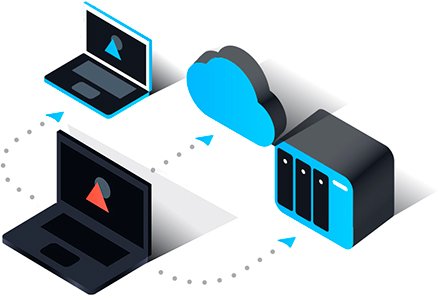User-friendly Ubuntu Online Backup Customization Options
Affordable Laptop Data Backup Software Disadvantages
Organizations must overcome the crucial challenge of protecting their priceless information as digital data storage becomes more and more important. By offering safe and accessible storage for important data, cloud database backup offers a solution. In this article, we'll go over the significance and advantages of cloud database backup as well as the best methods for putting it into practice.
- Recognizing Cloud Database Backup:
Customizable Best Encrypted Cloud Backup Case Studies

The process of keeping copies of your database in a remote server or data center that is online is referred to as cloud database backup. It offers an off-site backup option that guarantees data redundancy, hardware fail-safeness, natural disaster protection, and cyber threats.
- Benefits of cloud database backup
Sophisticated Online Backup Service Rsync Full Analysis
Compared to conventional backup techniques, cloud database backup has a number of advantages. Among them are:
Data redundancy: By storing data across multiple servers, hardware failures and disasters are less likely to result in data loss.
Scalability: With cloud backup, you can quickly increase or decrease the amount of storage you need depending on your needs.
Accessibility: With cloud backup, any device with an internet connection can access your data whenever, wherever you want.
Cost-effectiveness: Cloud backup eliminates the need for pricey backup personnel, infrastructure, and maintenance.
Automated Backups: Cloud backup services frequently offer incremental and automated backups, which eliminate the need for manual labor.
Cloud-based Online Backup Partner Programs For Experts

- Selecting the best Cloud Database Backup Service:
Take into account the following when choosing a cloud database backup provider:
Next-gen Backup Solution For Mac In the Cloud Era
- Security Measures: Make sure the service provider uses reliable security measures like compliance certifications, access controls, and encryption.
- Reliability: Look for businesses that have a solid reputation for dependability and long-term warranties.
- Scalability: Verify that the service provider provides storage options that are adaptable to your expanding data requirements.
For quick and effective data transfers, take into account the provider's network infrastructure and bandwidth capabilities.
- Cloud database backup implementation
Robust Backup Solution For Softwares For Beginners
Use these best practices to implement cloud database backup successfully:
- Define Backup Policies: Clearly specify your backup needs, including the frequency, anonymous retention, and recovery point goals.
- Encryption: To guarantee the integrity and confidentiality of your data, encrypt it before moving it to the cloud.
- Regular Testing: To ensure that your backups are accurate and complete, regularly test the restoration process.
Implement monitoring and alerting systems to quickly identify problems or failures in the backup process.
- Disaster Recovery Plan: Create a thorough disaster recovery plan that outlines go to this website how to retrieve data in the event of an emergency.
Modern Mailenable Mail Server Customization Options
- Managing a backup cloud database

Continuous monitoring and maintenance are necessary for managing cloud database backup. Think about these suggestions:
Cutting-edge Offsite Secure Backup Strategies
- Regularly Monitor Backups: Keep an eye on the backup procedure to make sure it's done correctly and quickly fix any mistakes or failures.
- Review and update backup policies on a regular basis to keep up with evolving regulations and business needs.
- Retention Management: Depending on business priorities and legal requirements, control how long your backups remain in storage.
Implement data archiving techniques to transfer infrequently accessed data to cost-effective storage tiers while maintaining accessibility.
Periodic Reviews: Review your cloud database backup strategy on a regular basis to spot areas for improvement and make sure it complies with company objectives.
Important Notes:
Efficient Off Site Storage For Computer Files For the Modern Era
Data redundancy, scalability, accessibility, cost efficiency, and automated backups are just a few of the advantages of cloud database backup, which offers secure and accessible storage for important data.
- When selecting a provider, take security precautions into account, as well as dependability, speed of data transfers, and reliability.
Creating backup policies, encryption, routine testing, monitoring and alerting, and creating a disaster recovery plan are all components of cloud database backup implementation.
Regular backup monitoring, backup More about the author policies updates, retention management, data archiving, and periodic reviews are all necessary to effectively manage cloud database backup.
Remember that protecting the sensitive data in your organization requires the implementation of a strong cloud database backup strategy. To guarantee data security, accessibility, and business continuity, embrace the power of cloud backup.
Integrated Backup Solution For Backup Data Recovery Tactics
Key Takeaways or a related phrase
Data redundancy and protection against hardware failures or disasters are guaranteed by cloud database backup.
Scalability, accessibility, cost effectiveness, and automated backups are just a few of the advantages.
When selecting a provider, take security precautions into account, as well as dependability, speed of data transfer, and reliability.
- Adopt best practices like encryption, regular testing, monitoring and alerting, disaster recovery planning, and backup policies.
Monitoring backups, updating policies, managing retention, putting data archiving into place, and conducting periodic reviews are all part of effective management.